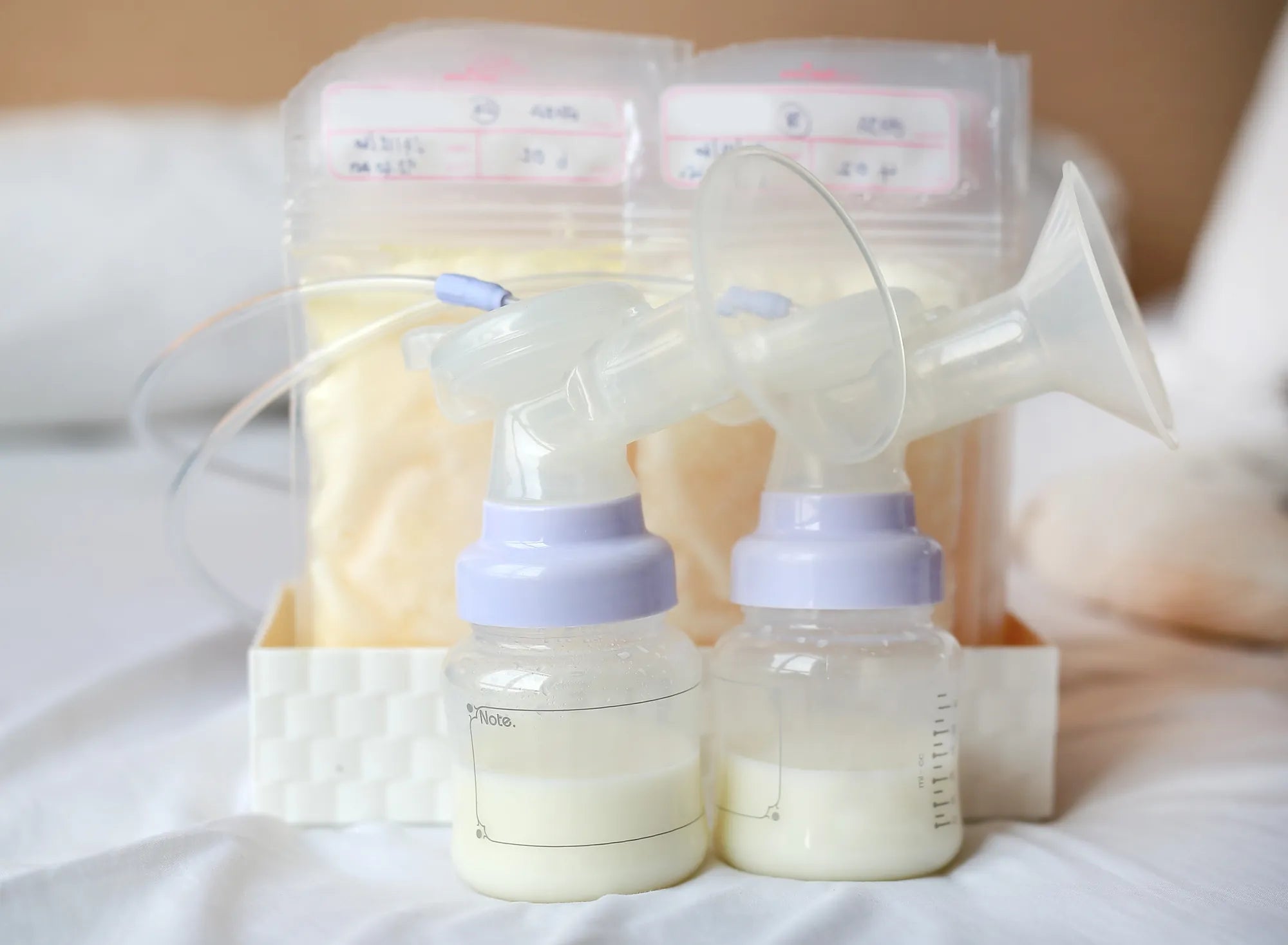Startseite
Pregnancy, Breastfeeding, and Pumping: The Ultimate Guide for Moms
How Long Pump Breast Milk: A Comprehensive Guide for New Mothers

How Long Pump Breast Milk: A Comprehensive Guide for New Mothers
For new mothers, understanding how long to pump breast milk can be a daunting task. Breastfeeding is a natural process, but when it comes to pumping, there are many factors to consider. This guide will walk you through the essentials, helping you make informed decisions about your pumping routine.
Why Pumping Breast Milk is Important
Pumping breast milk is crucial for mothers who need to be away from their babies for extended periods, whether due to work, medical reasons, or personal commitments. It ensures that your baby continues to receive the essential nutrients found in breast milk, even when you're not physically present.
Factors Affecting How Long to Pump Breast Milk
Several factors influence how long you should pump breast milk. These include your baby's age, your milk supply, and your pumping schedule. Understanding these factors can help you optimize your pumping sessions.
Baby's Age
Newborns require more frequent feedings compared to older babies. As your baby grows, the frequency and duration of pumping sessions may change. It's essential to adjust your pumping routine to meet your baby's evolving needs.
Milk Supply
Your milk supply plays a significant role in determining how long you should pump. Mothers with a robust milk supply may find shorter pumping sessions sufficient, while those with a lower supply might need to pump longer to ensure their baby gets enough milk.
Pumping Schedule
Your daily routine and commitments also affect how long you should pump. Working mothers might need to pump during breaks, while stay-at-home moms may have more flexibility. Creating a consistent pumping schedule can help maintain your milk supply.
How Long Should Each Pumping Session Last?
On average, a pumping session should last between 15 to 20 minutes. However, this can vary based on individual circumstances. Here are some guidelines to help you determine the optimal duration for your pumping sessions.
Double Pumping
Double pumping, which involves pumping both breasts simultaneously, can be more efficient. This method often allows mothers to complete a session in about 10 to 15 minutes, making it a time-saving option for busy moms.
Single Pumping
Single pumping, where you pump one breast at a time, typically takes longer. Each breast may require 10 to 15 minutes, resulting in a total session time of 20 to 30 minutes. This method is often used when mothers need to focus on one breast due to issues like engorgement or blocked ducts.
Tips for Effective Pumping
To make the most out of your pumping sessions, consider these tips:
- Stay Relaxed: Stress can hinder milk flow. Find a quiet, comfortable place to pump and try to relax.
- Use Proper Technique: Ensure that the pump flanges fit correctly and that you're using the right suction level to avoid discomfort and maximize milk output.
- Stay Hydrated: Drinking plenty of water is essential for maintaining a healthy milk supply.
- Pump Frequently: Regular pumping sessions help stimulate milk production and maintain supply.
How to Store Pumped Breast Milk
Proper storage of pumped breast milk is crucial to ensure its safety and nutritional value. Here are some guidelines:
Room Temperature
Freshly pumped breast milk can be stored at room temperature for up to 4 hours. However, it's best to refrigerate or freeze it as soon as possible to preserve its quality.
Refrigeration
In the refrigerator, breast milk can be stored for up to 4 days. Place it in the back of the fridge, where the temperature is most consistent.
Freezing
For long-term storage, breast milk can be frozen for up to 6 months. Use airtight containers or breast milk storage bags, and label them with the date to keep track of freshness.
Common Challenges and Solutions
Pumping breast milk can come with its own set of challenges. Here are some common issues and how to address them:
Low Milk Supply
If you're struggling with a low milk supply, try pumping more frequently, staying hydrated, and ensuring you're using the correct pumping technique. Consulting a lactation specialist can also provide personalized advice.
Engorgement
Engorgement can make pumping uncomfortable. To alleviate this, try warm compresses before pumping and ensure you're emptying your breasts fully during each session.
Blocked Ducts
Blocked ducts can hinder milk flow. Massage the affected area gently and use warm compresses to help clear the blockage. Frequent pumping can also prevent this issue.
Balancing Pumping and Breastfeeding
Many mothers choose to combine pumping with direct breastfeeding. This approach offers flexibility and ensures your baby gets the benefits of breast milk even when you're not available. Here are some tips for balancing both:
- Pump After Feedings: Pumping after breastfeeding can help stimulate milk production and ensure your breasts are fully emptied.
- Use Pumped Milk for Bottle Feedings: Introduce a bottle with pumped milk to your baby, allowing others to feed them and giving you a break.
- Maintain a Routine: Consistency is key. Try to pump at the same times each day to establish a routine.
When to Seek Professional Help
If you're experiencing persistent issues with pumping, such as pain, low milk supply, or difficulty maintaining a routine, it may be time to seek professional help. Lactation consultants can provide valuable guidance and support to help you navigate the challenges of pumping breast milk.
Understanding how long to pump breast milk is essential for maintaining your milk supply and ensuring your baby's nutrition. By considering factors like your baby's age, milk supply, and pumping schedule, you can create an effective routine that works for you. Remember, every mother's journey is unique, so don't hesitate to seek support and make adjustments as needed. With the right approach, pumping breast milk can be a manageable and rewarding part of your breastfeeding journey.
Teilen


